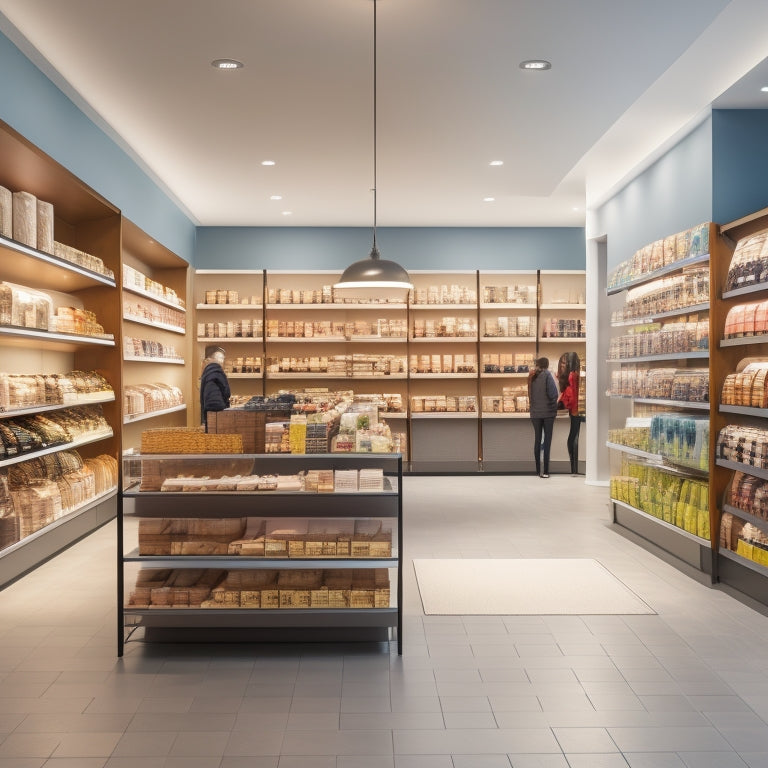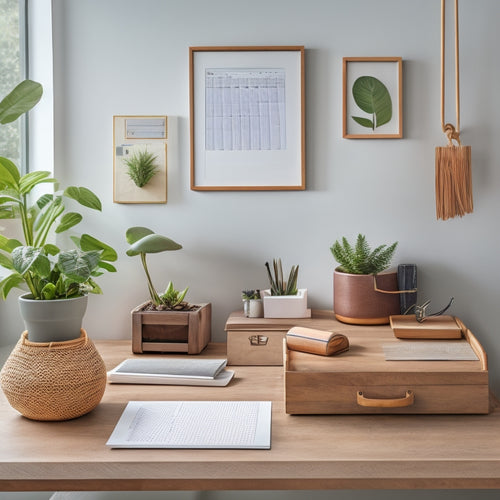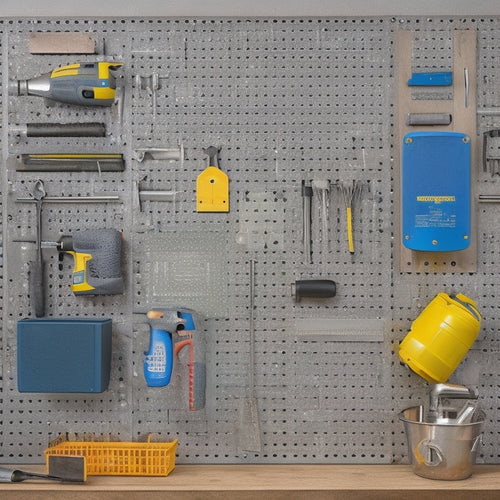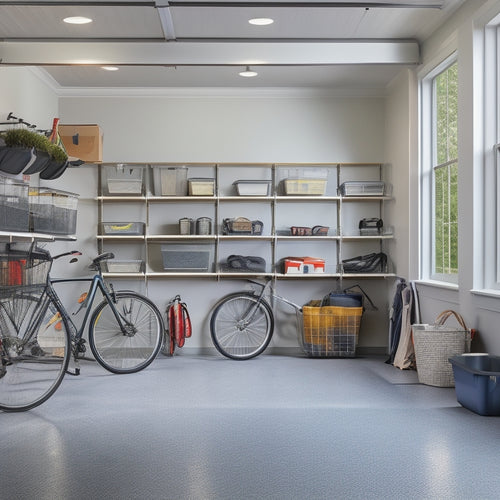
Boost Retail Efficiency: Master Gondola Shelving Tactics
Share
To boost retail efficiency, master gondola shelving tactics by optimizing layouts to create an efficient and visually appealing store environment. Prioritize product placement for high-demand items, encouraging exploration for impulse purchases. Effective visual merchandising strategies, such as attention-grabbing window displays and themed in-store displays, can increase customer engagement and promote brand awareness. By streamlining store operations procedures and mastering planogram implementation techniques, retailers can minimize waste, optimize shelf space, and increase sales. Implementing these tactics can have a significant impact on retail efficiency, and exploring these strategies further can uncover even more opportunities for growth and improvement.
Key Takeaways
• Strategically design gondola shelving layouts to prioritize high-demand items and encourage impulse purchases, boosting sales and customer satisfaction.
• Analyze sales data to optimize product placement and implement a just-in-time inventory system, minimizing waste and optimizing shelf space.
• Use planogram software to visualize store layouts and strategically place products for maximum sales, increasing customer engagement and brand promotion.
• Employ effective cross-selling techniques and create engaging displays for complementary products at the checkout counter, capitalizing on impulse purchases.
• Streamline store operations by allocating resources efficiently, ensuring adequate staff scheduling, and managing inventory effectively to maximize retail efficiency.
Optimizing Gondola Shelving Layout
By strategically designing gondola shelving layouts, retailers can create an efficient and visually appealing store environment that drives sales and enhances customer experience. Effective shelf organization and space utilization are essential in maximizing sales opportunities.
Retailers should prioritize product placement to facilitate customer flow, ensuring that high-demand items are easily accessible and prominently displayed. This thoughtful approach encourages customers to explore the store, increasing the chances of impulse purchases.
Additionally, optimizing gondola shelving layouts enables retailers to make the most of their available space, reducing congestion and creating a seamless shopping experience. By doing so, retailers can boost sales, improve customer satisfaction, and gain a competitive edge in the market.
Effective Visual Merchandising Strategies
Effective visual merchandising strategies are essential in creating an immersive shopping experience, as they enable retailers to showcase products in a way that captures customers' attention, communicates brand identity, and ultimately drives sales. By leveraging creative displays and product showcasing, retailers can increase customer engagement and promote their brand.
Here are some key tactics to explore:
-
Use attention-grabbing window displays to draw customers into the store.
-
Create themed in-store displays that align with current promotions or seasons.
-
Highlight product features and benefits through clear signage and demonstrations.
- Use lighting and color effectively to create an inviting atmosphere and draw attention to key products.
Streamlining Store Operations Procedures
Optimizing store operations procedures is essential to maintaining a seamless shopping experience, as it enables retailers to allocate resources efficiently and respond promptly to customer needs. Effective staff scheduling guarantees adequate coverage during peak hours, minimizing wait times and enhancing customer satisfaction.
Meanwhile, inventory management plays a critical role in streamlining store operations. By accurately tracking stock levels and identifying slow-moving items, retailers can reduce waste, minimize overstocking, and optimize shelf space. This, in turn, enables efficient replenishment and restocking, ensuring that customers can find what they need when they need it.
Mastering Planogram Implementation Techniques
In retail environments where every square foot counts, mastering planogram implementation techniques is essential for maximizing sales, reducing waste, and enhancing the overall shopping experience. By leveraging planogram software, retailers can optimize their inventory management and guarantee that products are placed in the most profitable locations.
To achieve this, retailers should:
- Analyze sales data to identify top-selling items and allocate prime shelf space accordingly.
- Conduct regular inventory audits to detect slow-moving items and adjust stock levels accordingly.
- Implement a just-in-time inventory system to minimize overstocking and reduce waste.
- Use planogram software to visualize and manage store layouts, ensuring that products are displayed in a way that drives sales and enhances the customer experience.
Maximizing Checkout Counter Sales
In addition, by strategically leveraging the checkout counter as a last-minute sales opportunity, retailers can capitalize on impulse purchases and increase average transaction values.
Effective cross-selling techniques can be employed to maximize impulse purchases by placing high-demand items near the checkout counter. Creating engaging displays that showcase complementary products or special deals can also enhance the customer experience and drive additional sales.
Additionally, retailers can utilize planograms to strategically place seasonal or discounted products at the checkout counter, increasing the likelihood of last-minute purchases.
Frequently Asked Questions
How Do I Measure the Effectiveness of My Retail Store's Layout Design?
To measure the effectiveness of your retail store's layout design, analyze sales data and conduct sales analysis to identify trends, while also tracking store traffic to determine high-traffic areas and optimizing product placement accordingly.
What Are the Benefits of Using Three-Dimensional Displays in Visual Merchandising?
"Cut to the chase" and elevate your visual merchandising strategy with three-dimensional displays, creating eye-catching, immersive experiences that captivate customers, drive sales, and increase brand engagement by showcasing products in a unique and memorable way.
How Often Should I Restock and Replenish Inventory to Avoid Dead Stock?
To prevent dead stock, implement a stockroom organization system and overstock strategies, such as regular inventory audits, demand forecasting, and just-in-time replenishment, to guarantee timely restocking and minimize excess inventory.
Can I Customize Planogram Software to Fit My Store's Unique Needs?
Yes, most planogram software allows customization to fit your store's unique needs through software integration and data analytics, enabling tailored product placement, optimized inventory management, and data-driven decision-making to drive sales and efficiency.
What Are the Most Effective Ways to Utilize Scent Marketing in Retail Stores?
"A million subtle nuances can make or break a customer's experience, and scent marketing is one of them. By leveraging Scent Psychology and Fragrance Profiling, retailers can curate bespoke scents that evoke emotions, enhance brand identity, and drive sales."
Related Posts
-

Best Organizing Tools for a Clutter-Free Space
You're on a mission to change your cluttered space into a peaceful oasis, and you're looking for the best organizing ...
-

How to Hang a Pegboard in 5 Easy Steps
You'll hang a pegboard in 5 easy steps by first preparing the wall, ensuring it's sturdy and free of obstructions. Ne...
-

Bin Garage Storage Ideas for Maximizing Space
You can greatly maximize your garage's storage space by utilizing vertical space with ceiling storage bins, stacking ...


